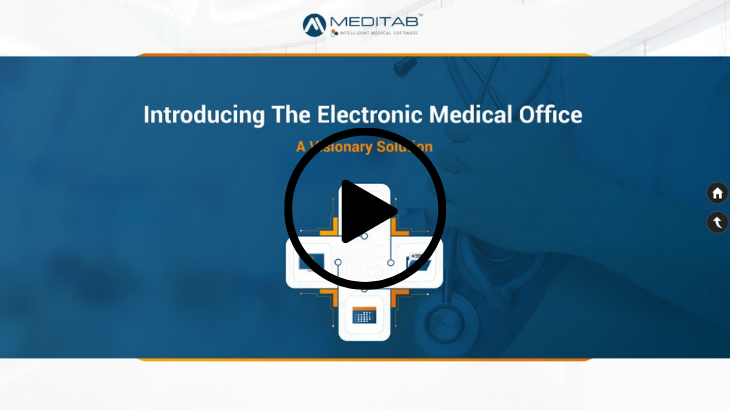Strategies for Supporting the Business Side of Your Practice
Posted by Janna Vienca Cañezal
Healthcare Technology Patient Engagement Office Management
How is modern technology changing, and what strategies can you use to run a successful healthcare practice in today’s challenging industry? That is the central question posed in Meditab’s recent webinar “Taking Care of Business: Is Your EHR Enough?”
Clint Miller, a healthcare and business expert with over 20 years of experience in process flow and organizational mapping, takes a deep dive into the business side of medical practice. Miller’s webinar analyzes the often overlooked and neglected parts of practice management — the phone system, staffing schedules, record requests, and organization and security in the medical office.
Why Is Your Business So Important for Medical Practice?
The strength of your business determines the quality of your patient care. That’s why Miller encourages medical practices to take the time to review organization and processes. Is your staff actively engaging with your patients? Are they satisfied with the work they are doing, or are they burned out?
Think about how coordination flows throughout your practice. Is your staff returning calls or are they even going to the right person? Are you addressing medical record requests in a timely manner?
All of these contribute to higher patient satisfaction, making a well-run office essential to your overall practice. “Taking Care of Business” examines all these aspects and provides solutions and strategies to help improve your business and, ultimately, patient care.
The 4 Key Challenges Facing a Modern Practice
1. Phone Call Management Issues
Your front desk can be an overwhelming center of activity. The phone calls never seem to stop, voicemails keep piling up, and then there’s the bustle of arriving patients waiting to be checked-in. An unorganized call flow and check-in process lead to long patient wait times, hurried calls, and less personal connection to the patients.
Then, there’s the possibility of losing voicemails or important call logs if they are just written on paper.
Add in a lack of reporting and tracking for call turnaround times and staff engagement, and things can get messy fast. Measuring processes and productivity is an important part of improving your business. As Miller explains, “How will you know you’re winning if you don’t keep score?”
Read More: IMS Caller - How to Improve Productivity with EHR Call Integration
2. Costly Staff Scheduling Mistakes
The biggest cost of doing business is often labor. It’s understandable that you might want to reduce the cost by maximizing your employees. Practices with multiple locations tend to share staff and, more often than not, a location ends up with a staffing shortage. That ends with longer patient wait times and burned-out employees.
Reactionary staffing, as Miller explains, is never a good idea.
A lack of visibility and communication about staffing schedules can lead to problems as well. If an MA knows that one of her doctors is going to be out today, then she can better prepare herself on today’s schedule or the office manager can pull out one of the MAs from the other less busy location.
Poor staffing can lead to business decline. Thankfully, “Taking Care of Business” breaks down how to be smarter about your scheduling and avoid costly staffing mistakes.
3. The True Expense of Medical Record Requests
Over half of the live participants in the webinar responded that they process more than 25 medical record requests a week and their staff spends more than 12 hours processing those requests. That’s a lot of time taken from other tasks.
Miller points out that many practices don’t even have the option to track billable record requests and that’s a direct drain on your resources. You are spending so much time and labor processing these requests but you are not getting anything back.
Streamlining your record request process ensures that you are getting paid for the work you are doing.
Read More: A Better Office, Improved with IMS Medical Record Request Management
4. HIPAA and Practice Security Concerns
Many practices still rely on physical storage of non-patient files, like business permits and employee documents. With paper files, there is a lack of accounting, tracking, and security.
These documents may not be PHI, but they could still be personal, confidential information related to an employee or your business.
Miller discusses how small and medium practices tend to be lax in tracking who comes in and out of the clinic. People coming in can look like “they belong,” but can have other motives.
Locking up your storage room and logging in every non-patient who comes in can be a good practice to start, but modern practices have more options.
How You Can Overcome New Healthcare Challenges
Healthcare has significantly changed over the years. Policy changes, keeping up with technology, and the shift towards value-based care highlight the need for practices to focus on efficiency in the medical office.
The old ways of running a medical practice are not enough anymore. You will need to leverage technology in all aspects of your medical practice and your EHR is not the only tool you will need. “Taking Care of Business” presents strategies and solutions to help your practice thrive in this ever-changing landscape.
Check Out the Full Webinar:
Share this post: on Twitter on Facebook on Google+

.png)

